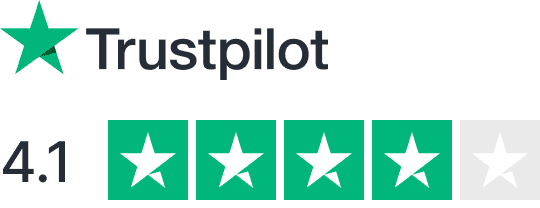Working with LATAM teams can be challenging due to language barriers, time zones, and cultural differences. But with the right strategies, you can streamline communication and boost collaboration.
Here’s a quick breakdown of the 5 steps to improve communication:
- Choose the Right Tools: Use platforms like Slack, Zoom, and Google Docs, ensuring they work well with LATAM’s internet speeds and offer Spanish/Portuguese interfaces.
- Set Language Standards: Pick a primary language, use translation tools wisely, and create a shared glossary for technical terms.
- Create Communication Rules: Define response times, structure messages clearly, and use specific tools for different types of communication.
- Handle Time Zone Differences: Use scheduling tools, plan around overlap hours, and keep meetings short and fair.
- Understand Work Styles: Build personal connections, adapt to collaborative decision-making, and respect indirect feedback styles.
These steps ensure smoother collaboration and help bridge the gaps in remote teamwork.
Effective Communication in a Remote First World
Step 1: Select Communication Tools
Choosing dependable communication tools is crucial for teams in LATAM.
Tools for Team Communication
Focus on platforms that work well even with varying internet speeds. Here’s a quick breakdown:
| Tool Type | Primary Use | Key Features to Look For |
|---|---|---|
| Real-time Chat | Daily conversations | Message threading, file sharing, search functionality |
| Video Conferencing | Team meetings | Screen sharing, recording, low-bandwidth mode |
| Project Management | Task tracking | Multi-language support, offline access, mobile apps |
| Document Collaboration | File sharing | Version control, commenting, offline editing |
Using a mix of tools can cover different communication needs. For instance, Slack can handle quick updates, while Zoom is better for in-depth discussions.
Ensure Tools Work Well in LATAM
- Internet Requirements
Test tools during peak LATAM hours to check performance. Choose platforms offering offline access and low-bandwidth modes. - Language Support
Confirm tools have Spanish or Portuguese interfaces. Look for built-in translation features and local-language documentation.
CareMinds suggests running a pilot test with your LATAM team to see how tools perform under different network conditions.
Security Features to Look For
- End-to-end encryption for private conversations
- Two-factor authentication for added protection
- Compliance with global data protection standards
- Regular updates and security patches
These steps ensure your tools are effective, accessible, and secure for your team.
Step 2: Set Language Standards
Clear language standards are essential for avoiding misunderstandings and improving communication within LATAM teams. Here’s how to establish effective language protocols:
Pick Your Main Work Language
Choosing a primary work language ensures consistency across all team interactions. While English is often the go-to business language, think about your team’s language skills:
| Language Proficiency Level | Suggested Communication Approach |
|---|---|
| Advanced (C1-C2) | Use English exclusively for technical discussions |
| Intermediate (B1-B2) | Combine English with translations as needed |
| Basic (A1-A2) | Use a bilingual approach with translator support |
Key areas to focus on:
- Documentation: Store all project documents in the primary language.
- Meeting Notes: Record key points in both English and Spanish/Portuguese.
- Technical Terms: Develop a shared glossary to standardize industry-specific language.
- Chat Guidelines: Set clear rules about which language to use in different communication channels.
Once your primary language is set, translation tools can help bridge any remaining gaps.
Use Translation Tools Effectively
Translation tools have come a long way, but using them wisely is critical for accurate communication. Here’s how to approach different scenarios:
| Communication Type | Suggested Translation Method |
|---|---|
| Real-time Chat | Use DeepL for quick translations |
| Technical Documents | Opt for professional translation services |
| Team Meetings | Rely on bilingual members or interpreters |
| Emergency Communications | Combine machine and human verification |
Tips for better translation practices:
- Always review automated translations before sending.
- Include both languages for critical messages to ensure clarity.
- Use straightforward language – skip idioms and overly complex phrases.
- Double-check understanding by asking team members to confirm they’ve understood.
CareMinds tackles language challenges by pre-screening developers for English proficiency, making team integration smoother.
Additional steps to consider:
- Build custom dictionaries for technical terms specific to your industry.
- Regularly evaluate translations and ask for team feedback to improve clarity.
- For high-stakes messages, implement a buddy system where fluent team members assist those still improving their language skills.
sbb-itb-a3fbb4e
Step 3: Create Communication Rules
Once you’ve established clear language standards, it’s time to set up protocols that ensure communication is both timely and effective across different situations.
Set Message Response Times
Not all messages are created equal – some require immediate attention, while others can wait. Here’s a simple breakdown:
| Message Priority | Expected Response Time | Examples |
|---|---|---|
| Emergency/Critical | Within 1 hour | System outages, production blockers |
| High Priority | Within 4 hours | Client escalations, sprint blockers |
| Normal Priority | Within 24 hours | Routine updates, general questions |
| Low Priority | Within 48 hours | FYI messages, documentation updates |
How to make this work:
- Use status indicators and set up automated critical alerts.
- Establish backup contact chains to avoid bottlenecks.
- Factor in time zones and local holidays.
- Regularly check team availability to adjust expectations.
Write Communication Guidelines
Clear communication starts with structure. Here’s what to focus on:
- Message Structure: Always include a subject line, priority level, action items, deadlines, and relevant context.
- Channel Usage: Assign specific tools for different needs – use chat for quick questions, email for formal updates, project tools for task tracking, and video calls for detailed discussions.
- Documentation Standards: Use templates, version control, and consistent naming conventions to keep everything organized.
Plan for Different Message Types
Different situations call for different approaches. Here’s how to handle common scenarios:
| Message Type | Communication Channel | Required Elements |
|---|---|---|
| Emergency Updates | Dedicated Slack channel + SMS | Impact level, immediate actions, response team |
| Sprint Updates | Project management tool | Progress metrics, blockers, next steps |
| Team Announcements | Email and team chat | Context, timeline, action items |
| Technical Issues | Ticket system | Problem description, severity, reproduction steps |
To make these processes effective:
- Train your team on how to classify messages and use templates.
- Set up clear escalation paths for urgent issues.
- Automate responses wherever possible to save time.
- Gather feedback regularly and tweak your protocols as needed.
CareMinds integrates these practices into their onboarding process to ensure all team members are aligned from day one.
Step 4: Handle Time Zone Differences
Managing time zones effectively takes careful planning and coordination to keep everyone on the same page.
Schedule Meetings Across Time Zones
Start by using tools that simplify scheduling and make time zone differences easier to handle:
| Tool | Purpose | Key Features |
|---|---|---|
| World Time Buddy | Time zone conversion | Visual time sliders, team availability grid |
| Google Calendar | Meeting scheduling | Automatic time zone conversion, availability checker |
| Calendly | Automated scheduling | Time zone detection, buffer time settings |
| Microsoft Teams | Team coordination | Time zone display, meeting suggestions |
Set your calendar to show local times, include these in meeting invites, and schedule recurring meetings that work for everyone. Use tools that automatically adjust for daylight savings to avoid confusion.
Once you’ve nailed down the tools, focus on effectively managing different work schedules.
Work With Different Time Schedules
Here’s how to align activities with varying schedules:
| Time Period | Activity Type | Communication Method |
|---|---|---|
| Overlap Hours | Strategic discussions, team meetings | Live video calls, instant messaging |
| Non-overlap Hours | Documentation, independent work | Asynchronous updates, recorded messages |
| Handoff Windows | Status updates, task transitions | Written summaries, video recordings |
Boost productivity by doing the following:
- Write detailed notes on decisions and discussions.
- Use shared project boards to track tasks.
- Record important meetings for those who can’t join live.
- Set up automated alerts for key updates.
These practices ensure smooth transitions between shifts and keep everyone informed.
Balance Meeting Times
Fair meeting schedules promote engagement and prevent burnout. Here are some tips:
- Rotate meeting times monthly to accommodate all time zones.
- Schedule core meetings during overlap hours.
- Keep meetings short and focused.
- Record meetings for those unable to attend.
Don’t forget to account for:
- Local holidays and cultural events.
- Standard working hours in different regions.
- Personal commitments of team members.
- The overlap time needed for collaboration.
Regularly gather team feedback and adjust meeting times as needed. Managing time zones well ensures smoother communication, building on the structured protocols from earlier steps.
Next, we’ll dive into how understanding work styles can further improve team collaboration.
Step 5: Learn About Each Other’s Work Styles
Once you’ve tackled tools, language, and scheduling, the next step is to dive deeper into understanding how each team member prefers to work.
Understand Work Style Differences
Cultural differences can play a big role in how teams communicate. Here’s a quick look at some common approaches in LATAM regions and how they might influence collaboration:
| Work Style Element | LATAM Approach | Impact on Communication |
|---|---|---|
| Meeting Structure | Focus on building relationships | Set aside time for personal connection before diving into business. |
| Decision Making | Collaborative and consensus-driven | Make sure to involve team members in key decisions. |
| Communication Style | Rich in context | Provide detailed background and context in messages. |
| Feedback Methods | Indirect but constructive | Deliver feedback tactfully and with diplomacy. |
While U.S. teams might prefer quicker decisions, LATAM teams often emphasize group input and collaboration.
Build Team Connections
Creating strong bonds across cultures doesn’t happen overnight, but these activities can help bridge the gap:
| Activity | Why It Helps | How to Do It |
|---|---|---|
| Cultural Exchange Sessions | Share customs and traditions | Host 30-minute presentations monthly. |
| Virtual Coffee Breaks | Foster informal relationships | Schedule casual 15-minute chats weekly. |
| Skill-sharing Workshops | Tap into team expertise | Organize bi-weekly technical demos. |
| Team Recognition | Celebrate accomplishments | Highlight team wins during meetings regularly. |
These activities encourage team members to get to know each other better, making communication smoother and more natural.
Find Training Resources
To further improve collaboration, consider using these tools and programs:
| Resource | What It Offers | How to Use It |
|---|---|---|
| Cultural Intelligence Training | Boosts cross-cultural understanding | Arrange workshops and team assessments. |
| Language Exchange Programs | Improves clarity in communication | Pair team members for practice sessions. |
| Communication Style Workshops | Builds flexibility in communication | Hold monthly skill-building sessions. |
| Documentation Guidelines | Keeps communication consistent | Create and share clear reference materials. |
According to companies like CareMinds, teams that prioritize cultural training and regular feedback see much better collaboration. Taking the time to understand each other’s work styles not only improves communication but also strengthens overall team performance.
Conclusion: Keep Improving Your Communication
Following these five steps gives you a solid framework for better communication. But working effectively with LATAM teams means regularly fine-tuning your processes and keeping your protocols up to date.
CareMinds shows how structured communication practices combined with carefully selected talent can make team integration seamless. Their selective hiring process ensures they bring on professionals who excel in both technical expertise and communication skills.
Here’s a practical approach to maintaining strong communication:
| Focus Area | Action Items | Expected Outcomes |
|---|---|---|
| Regular Assessment | Schedule monthly communication reviews | Spot gaps and areas for improvement early |
| Tool Optimization | Check tool usage metrics quarterly | Get the most out of your communication tools |
| Team Feedback | Run bi-weekly pulse surveys | Resolve issues before they affect productivity |
| Process Updates | Refresh guidelines every 6 months | Ensure protocols meet the team’s evolving needs |
Ongoing feedback and updates help keep these practices effective. Working with providers that specialize in pre-vetted talent can also speed up team integration and ensure strong communication from the start.
Use these strategies to strengthen communication and unlock the full potential of your LATAM teams.
















